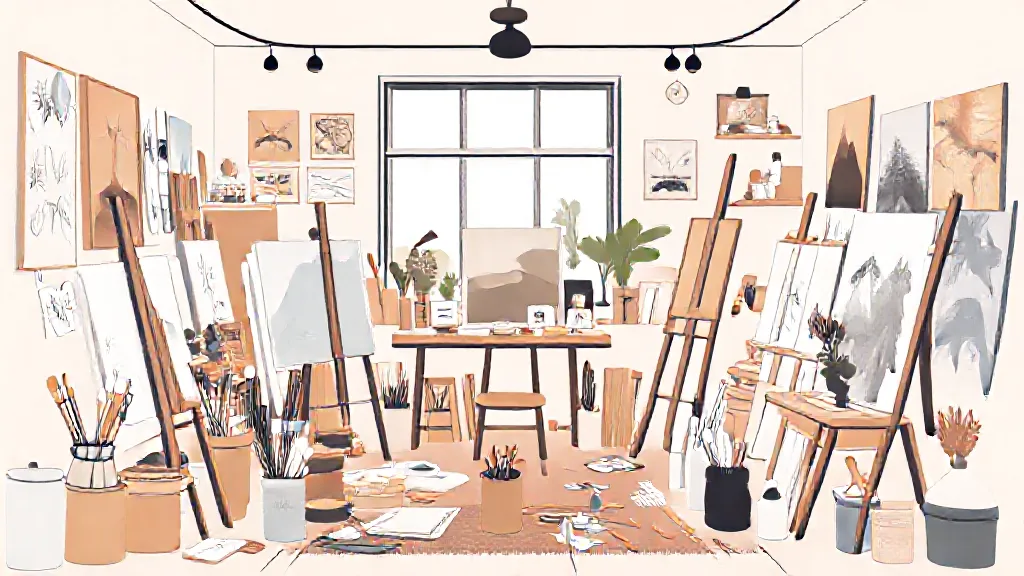Developing your own artistic style is a journey that involves self-exploration, experimentation, and a deep understanding of your influences and preferences. Your artistic style is not just a reflection of your techniques but also an embodiment of your emotions, experiences, and worldview. This article delves into the fundamental steps and considerations necessary for artists seeking to carve out their unique artistic identity.
Understanding the Foundations of Artistic Style
Artistic style is a combination of various elements, including technique, medium, subject matter, and the emotional resonance of your work. To develop a personal style, it is crucial to first analyze what you admire in other artists' work. Consider the styles that resonate with you—are they abstract, realistic, impressionistic, or something else? Understanding these foundations helps you identify the characteristics that you might want to incorporate into your own work.
Embrace Experimentation and Playfulness
One of the most effective ways to discover your artistic style is through experimentation. Allow yourself to play with different mediums, techniques, and subjects without the pressure of creating a 'final' piece. This process can lead to unexpected discoveries and insights about your preferences.
For instance, try painting with watercolors if you usually work with oils, or experiment with digital art if your focus has been traditional. Each new experience can provide valuable lessons and inform your evolving style.
Reflecting on Personal Experiences and Emotions
Your unique experiences and emotions can significantly shape your artistic voice.
Consider what themes resonate with you personally. Are there specific life events, cultural backgrounds, or emotional states that you feel compelled to express through your art? By infusing your work with personal significance, you create a deeper connection with your audience. For example, artists like Frida Kahlo are renowned for their deeply personal and symbolic works that reflect their life experiences.
Study Art History and Influences
Understanding the historical context of different art movements can provide insight into your style development. Study various artists and movements, from the Renaissance to contemporary art. Identify which movements or artists influence you the most and why.
This knowledge can offer inspiration and help you understand how various techniques and philosophies can be integrated into your own work. For instance, the bold colors of Fauvism or the emotional depth of Expressionism might inspire your palette and subject choices.
Creating a Cohesive Body of Work
As you experiment and explore, begin to focus on creating a cohesive body of work.
This does not mean you should limit yourself to one style, but rather strive for a sense of unity in your pieces. Consider how your choice of colors, themes, and techniques can work together to create a recognizable aesthetic. This can be achieved through repetition of motifs, consistent color palettes, or similar subject matter.
For example, an artist might focus on a specific theme like nature or urban life, using a consistent color scheme throughout their series.
Seek Feedback and Critique
Engaging with other artists and art communities can provide valuable feedback on your work. This could be through online platforms, local art groups, or workshops.
Constructive criticism can help you see your work from different perspectives and highlight areas for growth. However, it is essential to filter feedback through your own artistic vision. Not every suggestion will align with your style, and it is crucial to stay true to your instincts while being open to new ideas.
Documenting Your Artistic Journey
Keeping a journal or sketchbook can be an invaluable tool in your artistic development. Document your thoughts, experiments, and progress as you explore different styles and techniques. This record not only serves as a reflection of your journey but also allows you to identify patterns and preferences over time.
You may notice recurring themes or techniques that resonate with you, helping to solidify your artistic identity.
Continuing to Evolve and Adapt
Finally, it is important to recognize that developing an artistic style is not a fixed process. As you grow and change, so too will your art.
Embrace the idea that your style will evolve over time, influenced by new experiences, techniques, and insights. Allowing yourself the freedom to adapt will keep your work fresh and engaging, both for you and your audience. Remember, the journey of self-discovery in art is ongoing, and each phase offers new opportunities for growth and expression.
